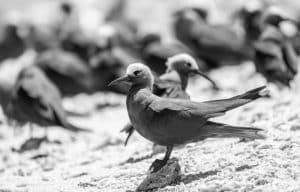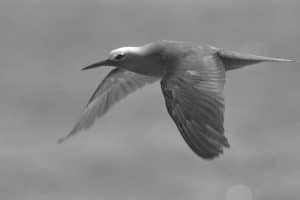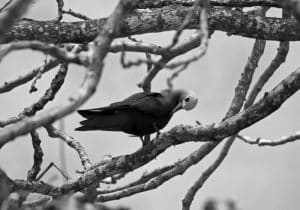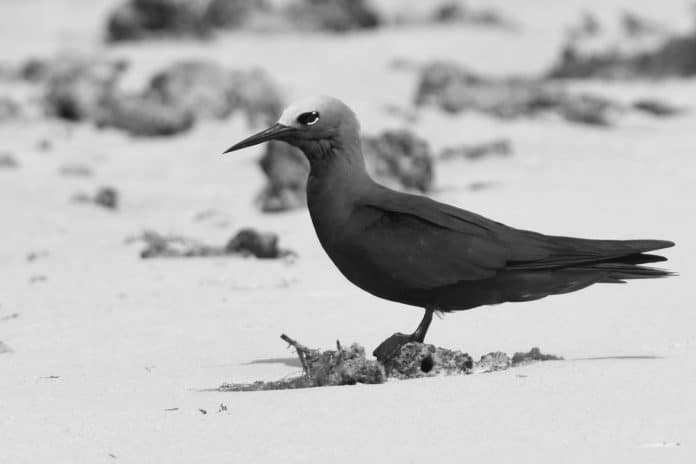Introduction to the lesser noddy in Tanzania
The lesser noddy (Anous tenuirostris) is a fascinating avian species that can be found in Tanzania, a country known for its rich biodiversity. This bird is a member of the tern family and is primarily found in coastal areas and islands in the Indian Ocean. The lesser noddy in Tanzania is known for its distinctive appearance and interesting behaviors, making it a subject of fascination for bird enthusiasts and researchers alike.
Habitat and distribution of the lesser noddy

The lesser noddy is predominantly found in the coastal regions of Tanzania, particularly in the Zanzibar Archipelago and Pemba Island. These areas provide the ideal habitat for the bird, as they offer a combination of rocky cliffs, dense vegetation, and offshore islets. The lesser noddy prefers to nest in colonies on these cliffs and islets, often in close proximity to other seabirds.
Physical characteristics of the lesser noddy
The lesser noddy is a small bird, measuring around 30 centimeters in length and weighing approximately 150 grams. It has a dark brown to black plumage, with a pale grey cap on its head. The bird also features a distinctive narrow, pointed beak that is well-suited for catching fish and other small prey. Its wings are long and slender, enabling it to fly swiftly and gracefully over the ocean.
Behavior and feeding habits of the lesser noddy
The lesser noddy is a highly social bird that forms large colonies during the breeding season. These colonies can consist of thousands of individuals, with each bird building a nest using sticks and twigs. The nests are often situated on rocky ledges or in trees, providing protection from predators. The lesser noddy primarily feeds on small fish, squid, and crustaceans, which it catches by plunge diving into the water from flight.
Threats and conservation status of the lesser noddy

Despite its unique characteristics, the lesser noddy faces several threats to its survival. One of the main threats is habitat loss due to human development and tourism activities. Coastal areas and islands where the bird nests are often targeted for infrastructure development, leading to the destruction of nesting sites. Additionally, overfishing and pollution in the surrounding waters can impact the availability of prey for the lesser noddy.
Conservation efforts and initiatives for the lesser noddy in Tanzania
To protect the lesser noddy and its habitat, various conservation efforts and initiatives have been put in place in Tanzania. These include the establishment of protected areas, such as marine reserves and national parks, where the bird can thrive undisturbed. Conservation organizations and government agencies also work together to raise awareness about the importance of preserving the lesser noddy and its ecosystem.
Research and monitoring of the lesser noddy population
In order to better understand the lesser noddy’s population dynamics and behavior, ongoing research and monitoring efforts are being conducted in Tanzania. These studies involve the use of tracking devices to monitor the bird’s movements and breeding patterns. Researchers also collect data on the diet and reproductive success of the species to assess its overall health and population stability.
Lesser noddy in Tanzania: Ecotourism and its impact
Ecotourism has emerged as a potential tool for the conservation of the lesser noddy in Tanzania. Responsible tourism practices can generate income for local communities while promoting the protection of the bird’s habitat. Tourists can participate in birdwatching tours and educational programs that highlight the importance of preserving the lesser noddy and its unique ecosystem. However, it is crucial that these activities are conducted in a sustainable manner to minimize disturbance to the bird and its nesting sites.
Lesser noddy in Tanzania: How you can contribute to its conservation

As an individual, there are several ways you can contribute to the conservation of the lesser noddy in Tanzania. Supporting local conservation organizations and initiatives financially or through volunteer work can make a significant difference. Additionally, practicing responsible tourism by choosing eco-friendly accommodations and activities can help minimize the impact on the bird’s habitat. Educating others about the importance of protecting the lesser noddy and its ecosystem is also crucial for its long-term survival.
Conclusion: The importance of protecting the lesser noddy in Tanzania
The lesser noddy is a remarkable avian species that plays a vital role in the coastal ecosystem of Tanzania. Its unique characteristics and behaviors make it a species worth protecting. By understanding the threats it faces and supporting conservation efforts, we can ensure the survival of the lesser noddy for future generations. Let us all work together to preserve this remarkable bird and its precious habitat in Tanzania.

































